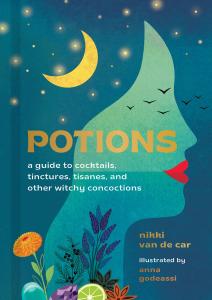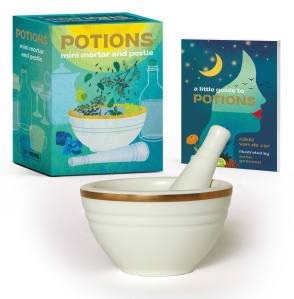Celebrating Litha by Nikki Van De Car
By Nikki Van de Car, author of Practical Magic, Wellness Witch, The Witchy Homestead, the forthcoming Potions, and more

Litha (pronounced LIE-tha) falls on the summer solstice, so on or around June 21st. It is the longest day and the shortest night of the year, and so is a time to celebrate the sun and its light and light-giving properties. It is a day of joy and bounty… and yet it is also a warning, and a farewell. Up until now, every day has grown longer and brighter, but from here on out, the days will be shorter, and the nights will be longer. The power of the sun will begin to wane, and we will begin to embrace the dark once more.
While Litha is the traditional pagan name for this day, cultures all over the world and throughout history have celebrated it, as everyone recognizes the power of the sun. Various gods and goddesses have been worshipped for their sun powers on this day—for instance, there is the Shinto goddess Amaterasu, known as the goddess “from which all light comes.” And, of course, there is the ancient Greek god Apollo, who drove the sun across the sky day after day. Huitzilopochtli, the Aztec warrior sun god, battled Nanahuatzin, the god of darkness, and triumphed and lost over and over again.

The Celtic traditions behind Litha and other pagan holidays (also known as sabbats) are actually quite similar to that eternal Aztec battle, though in the Celtic telling of this particular tale the antagonists are referred to as the Oak King and the Holly King. The Oak King, ruler of the sun and growth, is at the height of his powers on Litha. But come Mabon, the autumnal equinox, he is defeated by the Holly King, ruler of the dark and of rest and decay. The Holly King is at his most powerful on Yule, the winter solstice… but he will be defeated by the Oak King on Ostara, the spring equinox.
We can view this story as though the kings are enemies, locked in an eternal struggle for power, and we can curse the waning of the Oak King’s powers. But the truth is, we need both the light and the darkness, just as we need both growth and rest. I often prefer to think of these kings as friends who play a sociable and competitive game, knowing that they will each win, and lose, and win again.
Either way, Litha is certainly a time when the Oak King reigns supreme, and so we will revel in his light, warmth, and life-giving energy. There are so many ways to celebrate Litha—here are just a few suggestions for how you can incorporate the traditions of Litha into your practice, home, and life.
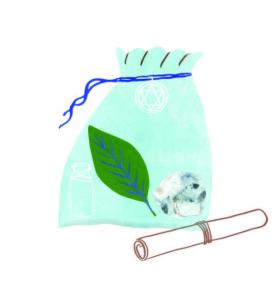
Host a bonfire party. This is probably the most classic Litha event. A bonfire is a nighttime reflection of the sun at its peak, continuing the Oak King’s light throughout the night. If you can, burn oak wood in celebration of him, and scatter mugwort, vervain, chamomile, yarrow, lavender, and thyme over the flames—these herbs are all sacred to Litha. Play some music and dance around the fire, perhaps even leaping over it (carefully)! Traditionally, revelers believed that the highest leap would determine the height of the crops that year. When the fire goes out, scatter the ashes in your garden, blessing and fertilizing your land and ensuring growth and vitality.
Keep a vigil. On this shortest night of the year, keep watch between the hours of sunset and sunrise, waiting for the Oak King to return. If that sounds a little exhausting, simply get up early and watch the sunrise, welcoming him. You can meditate in this gentle light, or listen to the quiet of the world around you as it just begins to wake up.
Dreams for Litha. If you do sleep on this short night, do so with herbs under your pillow, ideally mugwort, vervain, lavender, and/or St. John’s wort, which will encourage deep, dreaming sleep—just the thing for the brief time you have between sunset and sunrise.
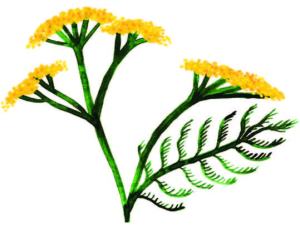
Honor the oak. If there are oak trees near you, decorate them with colored cloths, ideally yellow, gold, white, or green. Oak has the power of strength, courage, and endurance, all things we will need in the coming months. We can thank the Oak King for his strength and warmth.
Herbs and flowers. This is peak growing season for herbs and flowers, and Litha is an excellent excuse to go wild with them! Go out and harvest some wildflowers, gather some herbs, or simply treat yourself to a glorious bouquet. You can harvest St. John’s wort and decorate your home with it, along with other plants like rue, trefoil, roses, vervain, and oak leaves, of course. Better still, create a wreath of flowers to wear in your hair or hang on your door.
Refresh your altar. The sabbats are always a good time to tend to your altar, and altars for Litha are glorious. Oak leaves or branches, flowers, herbs, sunstone, pyrite, and candles are all excellent additions to your sacred space at this time. You might make an offering of honey or bread to your ancestors, and generally just let things sprawl in abundance.
Honey. There are so many beverages and cakes that commemorate Litha, but first and foremost are foods that incorporate honey. Bees are out in numbers at this time of year, and they are making honey in abundance. You can bake a honey cake, toast friends with mead, or simply enjoy a sweet spoonful. Mead in particular is sacred to Litha, as this honey wine is said to have life-giving properties.
RECIPES FOR LITHA

Mead
Mead is surprisingly easy to make at home! Or perhaps not so surprisingly, since historians believe that mead was quite possibly the first intentionally crafted fermented beverage. Traditionally mead is made simply from honey and water that are left to ferment, often with the addition of some yeast to help things along. It can be flavored with fruit (which makes it a melomel) or with herbs or spices (which makes it a metheglin). If you use apple cider in place of water, your brew becomes a cyser—but these are all variations of mead.
Make sure everything you use is sanitized, as bacteria of any kind will spoil your mead. To begin, put a half gallon of filtered water in a large pot over medium heat. When it is warm but not boiling, add two to three pounds of honey, depending on how sweet you want your mead. Stir the honey in, then turn off the heat. While the honey mixture cools slightly, add your flavorings to a gallon jug with an airlock—you might consider juice, apples, orange slices, raisins, or anything else you like! Pour the honey water mixture into the jug, and then top it off with water until you have two to three inches of space at the top of the jug.
Let the mixture come to room temperature or just a little warmer, then add some yeast. You will likely want half a package of champagne yeast. Screw the lid on tightly and then shake the jug well—really well!—for several minutes. Remove the lid and seal the jug with the airlock. Over the next several hours, bubbles will begin to form as the fermentation process begins.
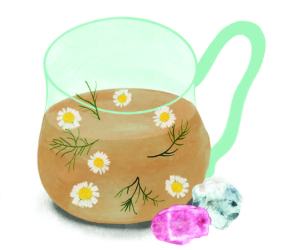
It will take between three and six weeks for your mead to be ready—you’ll know it’s time when you no longer see any bubbles in the jug and the airlock is still. There will be some sediment at the bottom of the jug, so you’ll want to sanitize some bottles and decant the mead into them for storage. Your mead will mellow as it ages, so you should let it rest for several months, or even for a year or two.
Honey Cake
This spiced honey cake recipe is simple and moist, and it tastes and feels like something people have been eating for thousands of years—which they have!
Ingredients
1/2 cup softened butter
1 cup honey
2 eggs
1/2 cup yogurt
1 tsp vanilla extract
2 tsp baking powder
1/4 tsp salt
1 tsp cinnamon
1/4 tsp ground cloves
1/4 tsp cardamom
2 cups flour
Preheat your oven to 350º. Grease a loaf pan and set it aside. Add the butter and honey to a bowl and mix with a hand or stand mixer until the butter is fluffy. Add the eggs one at a time, beating well after each addition, then stir in the yogurt and the vanilla extract. In a separate bowl, mix together the remaining dry ingredients, then slowly stir them into the wet mixture, adding a little at a time. Pour into your prepared loaf pan and bake for 30–35 minutes, or until a toothpick inserted into the center of the cake comes out clean.
RITUAL FOR LITHA
 This ritual can be performed alone or with a group—and fortunately, this is a practice that you can include family and friends in without feeling especially awkward or at risk of being judged. It’s very simple, but still joyful and magical. This ritual is best done at sunset, just when we say a brief goodbye to the light. You’ll need a candle for every participant. Go outside, if the weather is good, and stand where you can see the setting sun. Just as the sun begins its final descent, light your candle, and then use your candle to light the candle of the person closest to you. They will use theirs to light someone else’s, and so on, until you have all shared your light with one another. As the sun sets, let the smaller version of it that you hold in your hands flicker gently with the air and with your breath, the twin vibrations of life. Reflect on the power you carry within you, and the light you have to offer others. Enjoy the light that they give to you, as you share this moment together.
This ritual can be performed alone or with a group—and fortunately, this is a practice that you can include family and friends in without feeling especially awkward or at risk of being judged. It’s very simple, but still joyful and magical. This ritual is best done at sunset, just when we say a brief goodbye to the light. You’ll need a candle for every participant. Go outside, if the weather is good, and stand where you can see the setting sun. Just as the sun begins its final descent, light your candle, and then use your candle to light the candle of the person closest to you. They will use theirs to light someone else’s, and so on, until you have all shared your light with one another. As the sun sets, let the smaller version of it that you hold in your hands flicker gently with the air and with your breath, the twin vibrations of life. Reflect on the power you carry within you, and the light you have to offer others. Enjoy the light that they give to you, as you share this moment together.
It’s a profound thing, really. We may understand more than our ancestors did, including what the sun is and that it is we on earth who spin around that central star, not the other way around. And yet, the miracle of sunrise and sunset is no less magical for all that—indeed, it may be even more so. When we look at the sun and the stars (suns in other parts of the galaxy) we are peering into a vastness that we can never truly grasp, but that we are nevertheless a part of. The sun is a gift, giving us light and warmth and life, allowing our crops to grow and our hearts to sing. And even as Litha signifies the beginning of the waning of days, here at the sun’s peak we can be grateful for all that we have received, and all that we have to give.
Nikki Van De Car’s newest book, Potions: A Guide to Cocktails, Tinctures, Tisanes, and Other Witchy Concoctions, arrives August 23rd wherever you like to buy books.
Witchcraft meets cocktail craft in Potions, a contemporary introduction to the world of infusions, tisanes and herbal teas, homemade tinctures, and expertly mixed alcoholic beverages, all imbued with a healthy dose of everyday enchantment. As with all magic, intention is what makes a potion a potion, and author Nikki Van De Car uses her signature blend of holistic remedies, DIY projects, and accessible magical rituals to guide readers through the wide world of potion-making. From homebrewed kombuchas to crystal-charged cocktails, this fully illustrated guide is an essential addition to the arsenal of kitchen witches and enchanted mixologists.
Organized around a series of intentions -- including Creativity, Calm, Love, Harmony, and Protection -- the chapters in this book each include teas, cocktails, kombuchas, non-alcoholic beverages, and DIY components like bitters, shrubs, and infusions, that enhance the reader's spellwork. Every recipe will involve a brief ritual of some kind, whether setting an intention, or using a crystal, sun magic, or moon magic, and each recipe will involve some form of herbal magic. Each cocktail is accompanied by a vibrant, full-color illustration, and each chapter includes longer mystical rituals to support the reader’s overall magical practice.
- MINI MORTAR AND PESTLE FOR POTIONS AND COCKTAILS: Whether you're creating a tincture to invite creativity, or creating your own bitters for craft cocktails, this brass-colored, food-safe ceramic mortar and pestle will bring a touch of magic to rituals, holistic medicine, and at-home mixology.
- DELUXE FULLY ILLUSTRATED PACKAGE: This mini set is housed in a vibrant, full-illustrated magnetic closure box, and includes a mortar and pestle (approx. 2" tall), cleansing crystal, and mini book.
- INCLUDES RECIPES AND DIYS: A 48-page bonus mini book includes cocktail recipes, and DIY instructions for infusions, tinctures, and home brewed kombucha.
- A PERFECT GIFT: This beautiful set is an ideal gift for witches, mixologists, and herbal remedy enthusiasts.





